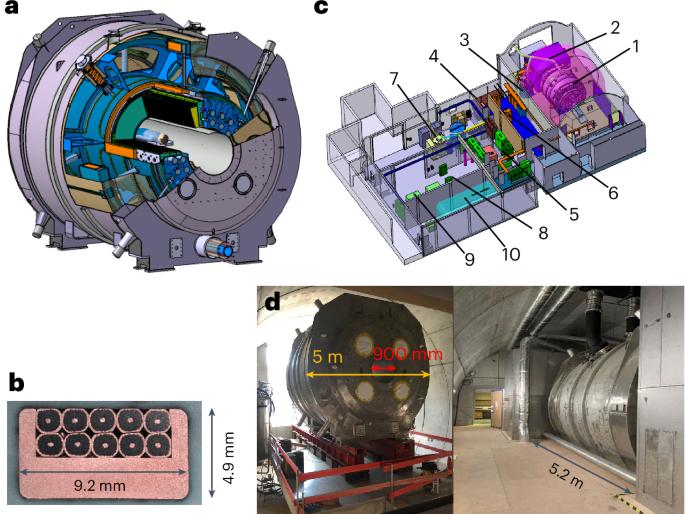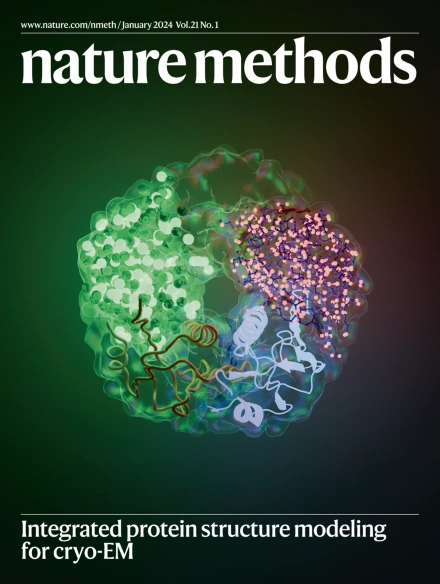In vivo imaging of the human brain with the Iseult 11.7-T MRI scanner
IF 36.1
1区 生物学
Q1 BIOCHEMICAL RESEARCH METHODS
引用次数: 0
Abstract
The understanding of the human brain is one of the main scientific challenges of the twenty-first century. In the early 2000s, the French Atomic Energy Commission launched a program to conceive and build a human magnetic resonance imaging scanner operating at 11.7 T. We have now acquired human brain images in vivo at such a magnetic field. We deployed parallel transmission tools to mitigate the radiofrequency field inhomogeneity problem and tame the specific absorption rate. The safety of human imaging at such high field strength was demonstrated using physiological, vestibular, behavioral and genotoxicity measurements on the imaged volunteers. Our technology yields T2 and T2*-weighted images reaching mesoscale resolutions within short acquisition times and with a high signal and contrast-to-noise ratio. In a technological tour de force, a whole-body 11.7-T MRI scanner has been developed. Here images of the human brain are presented while safety for the imaged human volunteers has been ascertained.

使用 Iseult 11.7-T 核磁共振成像扫描仪对人脑进行活体成像。
了解人类大脑是二十一世纪的主要科学挑战之一。本世纪初,法国原子能委员会启动了一项计划,构想并建造一台在 11.7 T 下工作的人体磁共振成像扫描仪。现在,我们已经在这样的磁场下获取了活体人脑图像。我们采用并行传输工具来缓解射频场不均匀性问题,并控制比吸收率。通过对成像志愿者进行生理、前庭、行为和遗传毒性测量,证明了在如此高的磁场强度下进行人体成像的安全性。我们的技术能在较短的采集时间内获得达到中尺度分辨率的 T2 和 T2* 加权图像,并具有较高的信号和对比度-噪声比。
本文章由计算机程序翻译,如有差异,请以英文原文为准。
求助全文
约1分钟内获得全文
求助全文
来源期刊

Nature Methods
生物-生化研究方法
CiteScore
58.70
自引率
1.70%
发文量
326
审稿时长
1 months
期刊介绍:
Nature Methods is a monthly journal that focuses on publishing innovative methods and substantial enhancements to fundamental life sciences research techniques. Geared towards a diverse, interdisciplinary readership of researchers in academia and industry engaged in laboratory work, the journal offers new tools for research and emphasizes the immediate practical significance of the featured work. It publishes primary research papers and reviews recent technical and methodological advancements, with a particular interest in primary methods papers relevant to the biological and biomedical sciences. This includes methods rooted in chemistry with practical applications for studying biological problems.
 求助内容:
求助内容: 应助结果提醒方式:
应助结果提醒方式:


